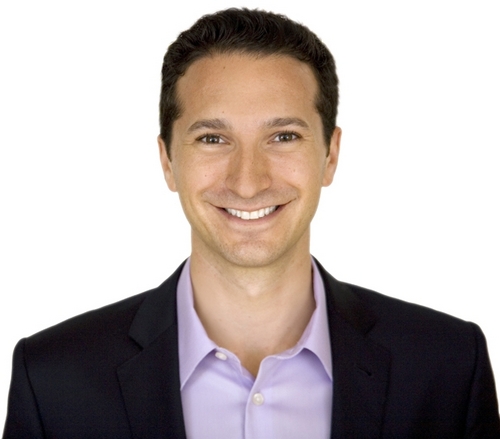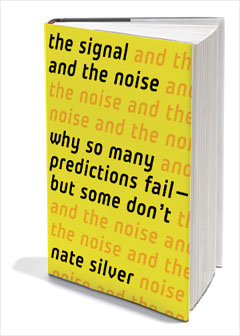
Expert Heads Up No Limit Hold'em Will Tipton is fairly recently released (November 2012) and, despite its unquestionable relevance, very little (or no) words have been said about this book that deals with a very interesting form of poker or heads up. The game is more dynamic and this variant exposed to light the flaws in the play of an opponent. In other words, your weaknesses poker will certainly be more apparent when playing heads up that if you play full ring for example, if only because you have to play a lot more hands (and in turn, make more mistakes) .
A few words about the author
The author is a poker player for several years now. He began playing in 2007 and is today a specialist heads up highly acclaimed in the community 2 +2 ("yaqh" on the forums).
From the first lines of the book, we see that the author has a very intellectual approach to poker (he is currently a doctoral candidate at Cornell University). It attempts to describe in detail what the game heads up, without falling into redundancy or in clichés.
The editor surprised by the quality of the work
The book opens with a very complimentary review of his editor who admits not having started reading "Expert Heads Up No Limit Hold'em" with great enthusiasm. In his words, as a publisher, "we receive several documents to be edited, but to put it in a polite way, saying only that the quality of these documents is quite variable."
However, after a few hours of reading, the editor knew that the book would be published and text quality was very high.
Before commenting, let's see how the text is cut.
Sections of the book
The book is divided into six large sections:
Chapter 1: The author begins with a discussion of what it means to speak of poker and how he described the heads up strategy. It specifies how to describe the study and how it will take to teach its readers object.
Chapter 2: This chapter will be described in the most profitable way to play against opponents whose strategy is known (the Hero deduct strategy to force play against More Naughty Hero Naughty play against, he has accumulated more information about him. to help play the next hand). Details will also be made on the changes that the Hero will bring to his game as the villain style will fit the style of Hero (which attempts to exploit Vilain). Two essential qualities (and connected) of a good poker player heads up is 1 - Play detective and investigate how that plays Ugly, short, draw conclusions on his game 2 - From this information, adapt and make sure to exploit the weaknesses of his opponent and adopt a style of play versus optimal playing style villain.
Chapter 3: This chapter deals exclusively with the preflop action and we will try to solve the game before the flop only. This is the simplest situations when playing heads up, but it is also to understand the short stack play and develop an optimal approach to play against short stacks. This chapter introduces several important concepts. It is specified short stack, but we should rather talk about the changes that will bring Hero to the number of big blinds his opponent (and stack stack compared to Hero Villain).
Chapter 4: This chapter has introduced the concept of indifference that will eventually help to understand several concepts.
Chapter 5: In this chapter, a brief discussion on different hands and fairness. We address the ranks of our enemies in different situations and how best to respond to this range.
Chapter 6: Here, a general discussion on how to play post-flop, the most profitable way to play his hands, how to exploit his opponents and a detailed description of each street. Many hands will be cut street by street and then be reviewed in their entirety. A discussion also more
General on the types of opponents can be read. For example, when you play against a very bad player, is it good to let a very small edge and wait for a better situation? You can also read about other more advanced topics.
Comments and ratings of the book
Now my appreciations. Obviously, this kind of work has brought joy to many considering the few publications on the heads up. Apart from a book heads up on SnG (Collin Moshman) and another which is given to all seasons the past ten months (the work of Paul Wisicka), nothing really remarkable was published. This release is a nice surprise and is really rewarding to read. As mentioned above, the author has a very intellectual approach to poker and several concepts that were never put into words are now in this book. It is also interesting to note that the author does not take any shortcut (which may put off some more complex reading of the book) and he prefers accuracy to brevity. The author gives great importance to mathematics that are essential in his view any player heads up and dissects a few hands with them. Rest assured, if you're not a fan of math concepts are well explained and any player who gives it, assimilate the material well.
Review the basic concepts
In the first chapter, there are questions about the preflop raise when playing heads up. Approximately 99% of the players heads up to revive 2BB or 3BB (100 big blinds deep), but it is still important to note that other options available to us, as does limp, to relaunch 4BB or raise preflop to 35BB. We have to wonder about each option and understand the stacks sizes, which option is best. This discussion will also provide a pretext for other enriching discussions on the heads up play in general. In short, it is pertinent to ask what is the optimal preflop raise and what are the variables to consider when making this decision. Accuracy may seem trivial, but is well worth the effort.
We learn to think for ourselves
In the introduction, the author states that the poker boom is changing much since (obviously) and the style of poker players heads up in 2007 is not the same that the players of 2012. The works evolve over time to track new trends. For example, in 2012, it is really important to note that we raise to 2BB or 3BB button, but maybe he will in a few years when the standard preflop raise will 5BB or 6BB (for whatever reason). Many other things have perhaps changed. It is for this reason that the author wants to give us more than TOOLS ways to play this or that particular hand. He wants to teach us how to think rather than telling us how to play. A style of play may be outdated and obsolete in a few years, but the fact adapt to his opponent and try to surrender his mistakes never will. The desire to improve and study the parts will never be exceeded. In short, the author tries to show us how to fish rather than feeding us a fish. Most of the work will always work the reader should do. After reading the book, you will not necessarily be a better player, but you certainly know how to become one.
PokerCollectif recommends this reading for all serious players. Note that the author of this book is a specialist sng heads up (even if the work is oriented heads up in general and not only heads up sng). But whether you're a cash game player, tournaments or sng, the fact of working your heads up play is in your best interest.
For players SH is a great way to solidify your game and master a looser style (since the fact of playing heads up forcing us to play more marginal hands and us out of our comfort zone). For players sng and tournaments, remember there is always a big gap between 2nd place and 1st place (especially in the tournament) and that to control your heads up play will certainly add to your profits the long term.
The book is also available in Kindle versions.
For now, the book is only available in the original English version, but the author works to be translated into several languages (including French).
Buy the book Expert Heads up No Limit Hold'em Volume 1 Will Tipton.
Expert Heads up No Limit Hold'em, Volume 1
Optimal and Exploitative Strategies
Will Tipton
November 2012 U.S. / Europe in November 2012
ISBN 9781904468943, 336 pages, 229 x 152mm / 6 x 9
eBook: $ 24.95
You can give us your comments and thoughts about the book in the thread created for this purpose: New book: Expert Heads Up No Limit Hold'em Will Tipton




